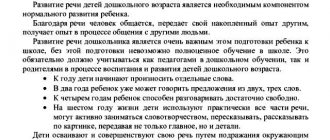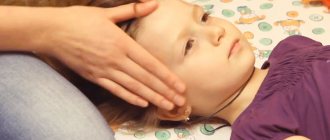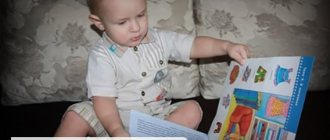Speech therapy dictations for students in grades 1-4
2nd grade.
Autumn.
Strong wind blows. The sky is cloudy. It rains frequently all day. There are puddles all around. The birds flew away to warmer lands. Magpies jump around people's homes. It's a boring time. (27 words).
3rd grade
Farewell to autumn.
The weather in October is damp. It rains all month. The autumn wind is blowing. The trees are rustling in the garden.
At night the rain stopped. The first snow fell. It's light all around. Everything around became elegant. Two crows sat on a birch tree. Fluffy snow fell. The road is frozen. Leaves and grass crunch on the path near the house.
(49 words).
4th grade.
Departure.
The swamps began to freeze. The swamp birds were the first to set off.
Swans, geese and ducks were preparing to fly away. The old taught the young. Every morning the youth went for walks. She strengthened her wings for a long flight.
Clever leaders trained individual packs and then all together. There was so much screaming, fun, joy!
Only Gray Neck accepted fate. How she swam, how she dived! Water was everything for the duck.
(61 words). (According to D.N. Mamin - Sibiryak).
Conducting speech therapy dictation in 2nd grade.
Goals:
1.Identification of children with written speech disorders among 2nd grade students
in the following areas:
- Delineation of speech units at the level of words and sentences.
- Sound analysis errors.
- Designation of softness of consonants.
- Mixing of letters by acoustic-articulatory similarity, by kinetic similarity.
- Perseverations.
- Anticipations.
- Agrammatisms, disorders with:
- word formation,
- agreement,
- management,
- use of prepositions.
Dictations.
Modeling.
Andryusha and Lena took clay. The guys poured water into the jar. The girl makes a turnip. Here's the ponytail. There's a leaf here. Andryusha got a bunny and an elephant. White bunny. The elephant is gray.
Sisters.
Tanya goes to school. She is seven years old. And Sveta is small. She plays with dolls. Grandfather Petya brought an ABC book. Tanya teaches Sveta to read. The little girl looks at the pictures.
Lilies of the valley.
Seryozha and Polina entered the thicket of the forest. Lilies of the valley were blooming there. These wonderful flowers are beautiful! They look like little cups. Lilies of the valley love to grow in the wilderness.
Spring.
Still frost and cold. There is snow and snowdrifts all around. And it’s already spring in our class. There are tree branches in bottles and cans on the windows. Fragrant leaves have already appeared on the branches of the birch tree. And golden earrings hang on the alder branches. Just like in the garden in spring!
Conducting speech therapy dictation in 4 grades.
Goals:
1.Identification of children with written speech disorders among 4th grade students
in the following areas:
- Delineation of speech units at the level of words and sentences.
- Sound analysis errors.
- Designation of softness of consonants.
- Mixing of letters by acoustic-articulatory similarity, by kinetic similarity.
- Perseverations.
- Anticipations.
- Agrammatisms, disorders with:
- word formation,
- agreement,
- management,
- use of prepositions.
Dictations.
Reliable comrade.
Andryusha and Asya were sitting at the same desk. Andryusha always defended the weak. Asya was afraid of everything.
One day Andryusha brought a jar of spiders. Asya was scared. The boy felt ashamed.
After all, Asya is weaker than Andryusha.
The next day he met the girl at her
Houses. They went to school together. Along the way we came across dogs and a goat. Asya did not chicken out. A classmate was walking nearby.
Prickly beauty.
The foliage on the birch tree has turned yellow. Reddened leaves of aspens are falling. Only the Christmas tree doesn’t drop its needles. The tree changes its outfit gradually
.
For this, the tree needs about nine years. The prickly beauty does not sleep until late autumn .
In winter, the Christmas tree falls asleep. Heavy snowballs do not break the flexible branches of the tree. She looks elegant in a white hat and white scarf.
In winter it is warm in the spruce forest. Birds spend the night in it. Spruce paws do not allow the wind to pass through.
The Christmas tree will feel the arrival of a long spring day and come to life.
Songbirds.
How many
beautiful masters sing in a birch grove, in a wide field! The larks, thrushes, and nightingales are ringing in every possible way.
In the spring forest you will hear a song thrush. In a clear voice he sings out a hymn to spring. The Russian forest is filled with its ringing trill.
The lark is an early singer. A ray of summer sun just began to play on the horizon, in the clear azure
a joyful song is already sounding. You will not see the singer himself in the heavenly heights.
Best
singer of the Russian forest - the nightingale. He starts singing late at night. The wonderful sounds do not stop all night. You sit and listen to the most beautiful voice in the world.
Dictations.
1 class.
Squirrel. The squirrel lives in a hollow. The squirrel has a fluffy tail. The squirrel has a warm skin. She is warm in winter. She often sits on a branch. Cat. Misha had a cat. The cat's name was Ryzhik. Ryzhik's tail is fluffy. The boy often played with the cat. They were friends. Book. Uncle Yura brought a book. There is a bunny and a bear, Tanya and a ball. Elephant and horse. We love poetry. 2nd grade Squirrels. Boron smells like fragrant resin. Squirrels are jumping near an old pine tree. The animals took off their fluffy gray coats. Their backs and bushy tails became red. Throughout the long winter, the squirrels lived in the forest. They hid from the wind and cold in a warm nest. They are happy about the bright spring.
Favorite theater. Moscow has a puppet theater. Inna and Tatyana go there with joy. There is a wonderful clock on the wall. It's noon. The rooster calls the children. A bear, a goat, and a pig came out of the houses and started playing a song. The girls took tickets from the box office and sat down. The stage opened. The hall fell silent. 3rd grade Summer rain. It was a hot day. Suddenly there was a breeze. A blue cloud came running. She didn't block the sun. It began to rain. The sun illuminated the surroundings. Raindrops hit the grass and flowers heavily. They hung on leaves and blades of grass. A ray of sunshine played in every raindrop. Rain stopped. Look at the sky! Who built a beautiful bridge from the village to the meadows across the river? There is a light steam coming from the ground. The smell of wildflowers fills the air. Chris the dog. A little girl is lost. Grandma is in tears. They called Chris the dog to help. She sniffed the children's slippers and pulled her grandmother along with her. On the street, Chris quickly picked up the trail. And here is the fugitive. The baby was standing at the entrance to the park. Dogs adopt all human habits. An angry man is a mean dog. And the good man is kind. Trouble. The spring sun was shining brightly. We took the goats out onto fresh grass. There was a smell of smoke and burning. Dry grass was burning. The fire licked the lower branches of young trees. We cut down the spruce branches and began to put out the fire. Smoke came from the anthill in a thin stream. The ants lived through a long and difficult winter. They did not have time to meet the warm summer. The spruce and pine trees drooped. The birds don't sing. There are piles of ash on the hillocks
Inspection work for the year.
Grade 1 1. Dictation of words: KEY, SCARF, OLD WOMAN, CLEANING, DUCKLES, PORCH. 2. Compose and write down a sentence with one of these words. 3. Dictation Belka. The squirrel lives in a hollow. The squirrel has a fluffy tail. The squirrel has a warm skin. She is warm in winter. She often sits on a branch. Cat. Misha had a cat. The cat's name was Ryzhik. Ryzhik's tail is fluffy. The boy often played with the cat. They were friends. Book. Uncle Yura brought a book. There is a bunny and a bear, Tanya and a ball. Elephant and horse. We love poetry. 2nd grade Squirrels. Boron smells like fragrant resin. Squirrels are jumping near an old pine tree. The animals took off their fluffy gray coats. Their backs and bushy tails became red. Throughout the long winter, the squirrels lived in the forest. They hid from the wind and cold in a warm nest. They are happy about the bright spring. Word of reference: smells. Favorite theater. Moscow has a puppet theater. Inna and Tatyana go there with joy. There is a wonderful clock on the wall. It's noon. The rooster calls the children. A bear, a goat, and a pig came out of the houses and started playing a song. The girls took tickets from the box office and sat down. The stage opened. The hall fell silent. 3rd grade Summer rain. It was a hot day. Suddenly there was a breeze. A blue cloud came running. She didn't block the sun. It began to rain. The sun illuminated the surroundings. Raindrops hit the grass and flowers heavily. They hung on leaves and blades of grass. A ray of sunshine played in every raindrop. Rain stopped. Look at the sky! Who built a beautiful bridge from the village to the meadows across the river? There is a light steam coming from the ground. The smell of wildflowers fills the air. Chris the dog. A little girl is lost. Grandma is in tears. They called Chris the dog to help. She sniffed the children's slippers and pulled her grandmother along with her. On the street, Chris quickly picked up the trail. And here is the fugitive. The baby was standing at the entrance to the park. Dogs adopt all human habits. An angry man is a mean dog. And the good man is kind. Trouble. The spring sun was shining brightly. We took the goats out onto fresh grass. There was a smell of smoke and burning. Dry grass was burning. The fire licked the lower branches of young trees. We cut down the spruce branches and began to put out the fire. Smoke came from the anthill in a thin stream. The ants lived through a long and difficult winter. They did not have time to meet the warm summer. The spruce and pine trees drooped. The birds don't sing. There are piles of ash on the hillocks
4th grade Introductory diagnostics 1. Dictation. Autumn came. The hot summer flew by quickly. It often drizzles lightly. Gray clouds crawled across the sky. The grass in the forest clearing turned red. Autumn leaves float in puddles. A heap of ants darkens gloomily among the grass. The ants began to retreat to their homes. They rarely crawl out now. Two boletuses grew near an old stump. Mushroom caps looked cheerfully from the grass. A squirrel noticed them. She grabbed one mushroom and disappeared.
Reasons for appearance
Scientists have not yet identified the exact reasons why this disease occurs. This issue has not yet been fully studied, but most experts agree that the basis for the development of the disease is heredity. Causes of dysgraphia in younger schoolchildren:
- Heredity. As already noted, this is the main reason for the appearance of the disease. Children accept from their parents immaturity of the brain in certain parts. Because of this, there is a delay in the development of certain functions.
- Functional sources. This refers to various bodily diseases. For this reason, a violation of psycho-speech development occurs, and the child also loses the ability to read and write. Correction of dysgraphia and dyslexia in younger schoolchildren should be aimed primarily at eliminating the causes of the disease.
- Underdevelopment of the brain. Any injury or damage can cause dysgraphia. Moreover, brain damage could occur as a result of pathologies during pregnancy, asphyxia, or exposure to infection.
- Socio-psychological influence. Of course, we cannot forget about this factor. This disease can develop in children due to incorrect speech of people around them, lack of communication, as well as inattention to the child’s writing and reading on the part of parents.
Handwriting correction
The fact is that for a child with dysgraphia, handwriting causes a certain difficulty. Typically, such children write either very small or extremely large. Sloppy handwriting is not a negative thing, and you shouldn’t scold a child for it.
It will take about three weeks to teach a student to write correctly. First, you need to purchase a squared notebook and ask to reproduce the text on paper. The letter should not go beyond the cell - the main rule. You need to monitor this and support the child in every possible way.
You cannot overload children; a few correctly written lines a day are an excellent result. Even if parents are tired of working with their child, it is strictly forbidden to show it, much less raise their tone. It is recommended to use pens with a ribbed surface as writing instruments, as well as pencils in the shape of a triangle.
At home, you can play with your child by giving him a pen and ink. Then he will try to write correctly so as not to spoil the game.
Tasks “Labyrinth” and “Find the missing letter”
These two exercises are quite popular, and most parents use them to develop their child’s abilities. They are also useful for correcting dysgraphia.
“Labyrinth” perfectly develops gross motor skills of children. Currently, there are a huge number of different collections where you can find excellent puzzles. If desired, parents can draw the labyrinths themselves. The child’s main task is to trace with a finger or pen from the beginning of the intricate moves to the end. The organization of prevention and correction of dysgraphia in primary schoolchildren can be based on this exercise. It is the simplest and most universal.
The “Find the Missing Letter” exercise is aimed at developing attentiveness in children. To implement it, you need the source text, where everything is in its place. Then in the same material you need to remove the letters, leaving gaps in their place. The student’s task is to fill in the missing elements. The source text should not be removed, as the child needs something to build on.
When searching for material, you need to take into account the fact that it should interest the student. In this case, completing the task will turn into a game. Recently, dysgraphia has been developing more and more often in younger schoolchildren. Correction, exercises and prevention of this disease are simply necessary to protect the child from unpleasant consequences.
Prevention
Prevention of dysgraphia in younger schoolchildren can be expressed in impaired auditory recognition of speech sounds. From the age of 3, it is necessary to constantly check this point. If a child of this age has problems, they can be easily solved with regular exercise.
Recently, teaching children a foreign language (most often English) from 3-4 years old has become very popular. Children at this age remember new information well and perceive it easily. However, with the wrong approach to learning, a child may develop dysgraphia or dyslexia.
You should also pay attention to the correct pronunciation of words by adults. If parents repeat after their children, this can lead to certain problems. If a child speaks incorrectly, he must be immediately taught how to do it. Then he will remember better and speech will develop faster.
Effective methods for correcting dysgraphia
Here we will discuss in more detail the most effective ways to correct the disease:
- Word model. This exercise looks like this: the child is given a picture on which an object and a diagram of a word are drawn. The student's task is to name the object and then pronounce all the sounds of the word in order. Then match each sound with a letter and write the entire word.
- Ebbiehaus method. The student receives a sheet of words with missing letters. He needs to insert the missing letters and rewrite the entire word.
- Analysis of sounds and letters. The child is given a picture depicting a certain object. He needs to name this thing and write the word. Then put emphasis, divide into syllables and say them out loud. Each sound must be separated and emphasized with the appropriate color. Then you need to compare their number with the number of letters.
- Correction of errors. Here everyone gets a few words with intentional mistakes. The student’s task is to correct this and rewrite the words in the correct form.
The most common speech therapy disease is dysgraphia in primary schoolchildren. Correction and exercises that contribute to its treatment are presented below.










